Chapter 5. Chapter 5: DNA, Gene Expression, and Biotechnology
Review & Rehearse
Review & Rehearse
true
true
You must read each slide, and complete any questions on the slide, in sequence.

Instructions
Review the visual summaries and answer the essay questions below.
Make sure to enter a brief response that completely answers each question and explains your reasoning. When you click "Submit," you will be provided instant feedback, allowing you to check if your response is correct.
(This activity contains 15 total essay questions. Each new question will be revealed once you complete the preceding question.)
Question 5.1

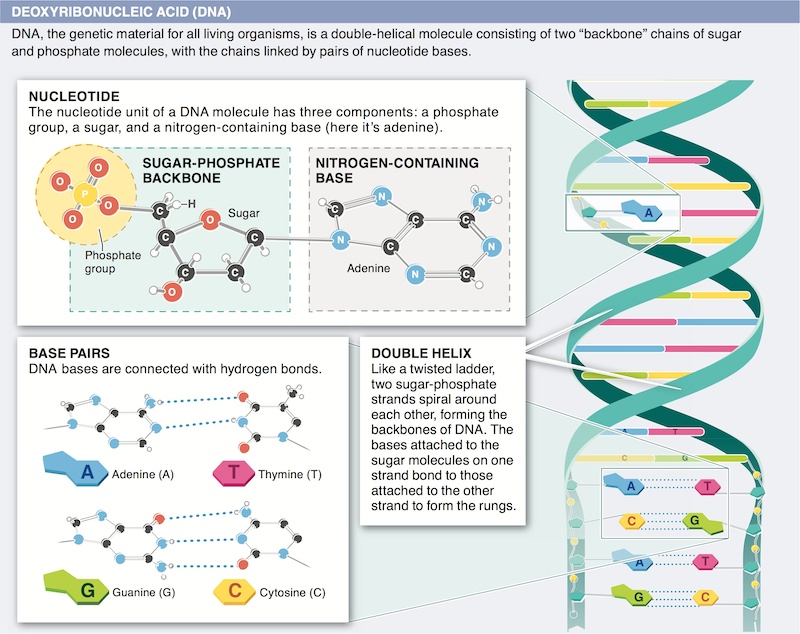
When biological evidence exists, DNA analysis can be used to identify criminals with accuracy and to clear suspects and exonerate persons mistakenly accused or convicted of crimes.
Question 5.2
LrHLjdG1726FARjo2mMfFmPemPqLZFHKDgvFYJ7oingOxhXq5z+o8ZxK6j1dzS5+vVGOWy+H3pgzT7nWFydac8pWK1VlPt/4rmmsV6XW4g6crfx0btLacLAeRkOtHpSEPc9r5tWXgrgTmrw7jOzYq4S1H6UIqsgzPFfGc+0A4afJfjMhuonpO+BMAn5D9WadbHgA3UdCCzOyWsHdpL+kxA==In this DNA molecule, 30% of the bases would be thymine. Cytosine bases are complementary to guanine bases, so 20% of the bases are cytosine and 20% are guanine, for a total of 40%. Adenine and thymine make up the remainder of the bases, or 60%. Since adenine and thymine are complementary bases, they occur in equal quantities: 30% adenine and 30% thymine.
Question 5.3
Ef8IJSYkzFhyMFY2AKBr6IxRBcAAM7dWFeHqX7KxhBs3LqMU1bX17dQZnHQEmV64HpuSuJnh4aT0UyI3UvCj/Pml0zikl2FdTBrzQH8QDwc=The sugar-phosphate backbone is the structure that holds the bases in sequence; only the base sequence carries genetic information.
Question 5.4
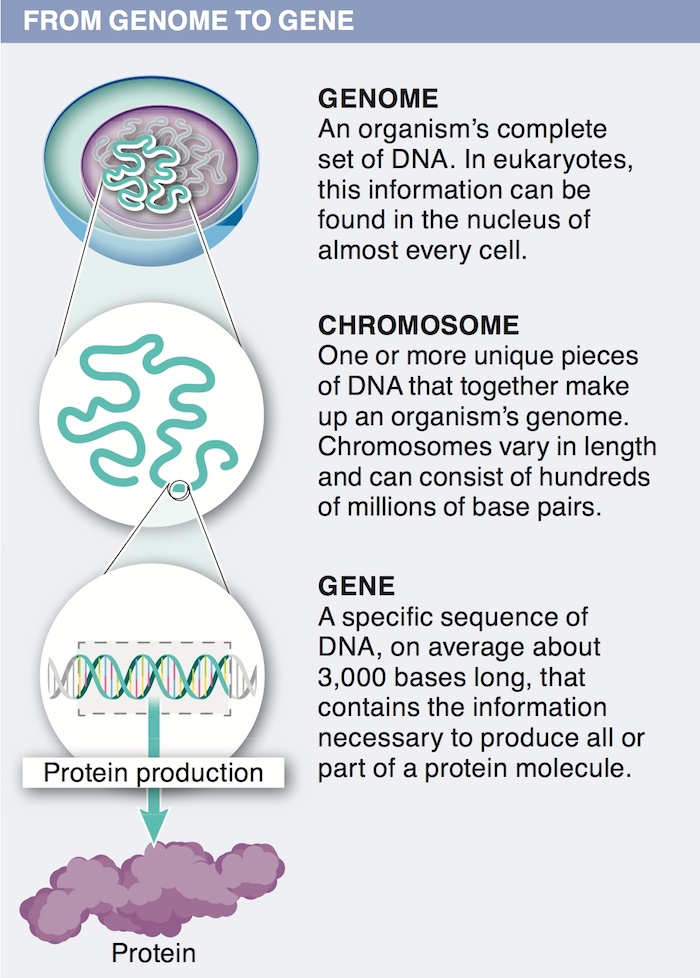
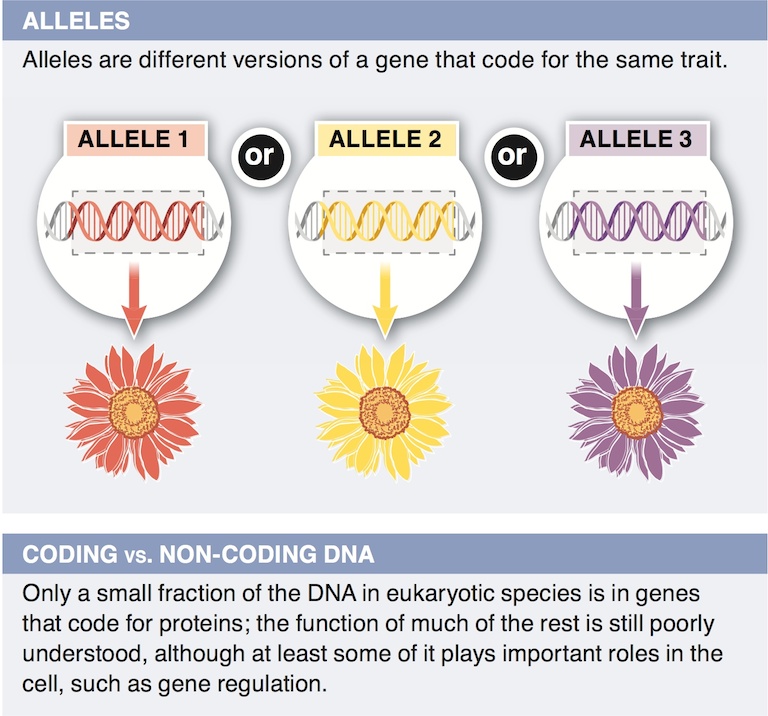
The exact function of much of this DNA is not known. It consists of non-coding DNA sequences within genes, called introns, and other non-coding DNA outside genes; these sequences of non-coding DNA are made up of duplicate versions of genes, gene fragments, pseudogenes, and segments that act as switches. “Junk” is not an appropriate term because scientists are only just beginning to understand the functions, or lack of function, of this DNA.
Question 5.5

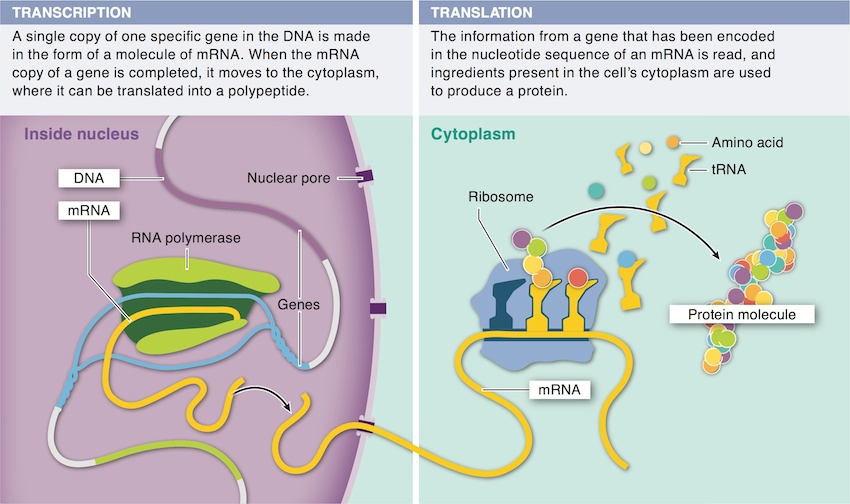
Transcription is the process in which DNA is used as a template for the production of a messenger RNA molecule in the nucleus. The nucleotide sequence of the mRNA can then be used to encode the amino acid sequence of a protein, in the presence of ribosomes, in the cytoplasm. Since DNA is restricted to the nucleus, mRNA is needed to transfer information from the nucleus to the cytoplasm for translation.
Question 5.6
t+kV7vY7Eg4LF+Qa9SpPvIzkmrZT/RY/wla65T5qPMCF6fS9ZfQeKJLFFR/c7B5q5b6TrcParRP7tebeFVRk+w7bHD8poCjDDIadSbvAOjPgMa14vGHtbCKzqTH+dj2kHand/KY1cMI=For translation to occur, mRNA, synthesized in the nucleus, must move to the ribosomes, which are the cytoplasmic organelles involved in protein synthesis. Ribosomes are either attached to the endoplasmic reticulum or free-floating in the cytoplasm.
Question 5.7
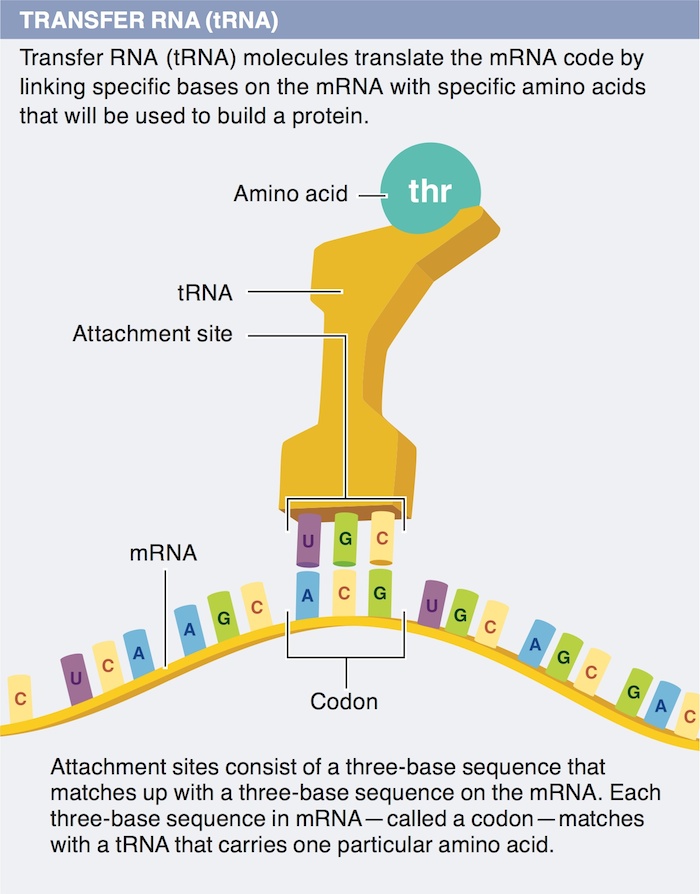
Transfer RNA molecules move specific amino acids, corresponding to a tRNA’s anticodon sequence, to the growing amino acid chain being produced on an mRNA-ribosome complex. Each tRNA molecule binds (through its anticodon) to a complementary RNA sequence, called a codon, on the mRNA to ensure the correct sequence of amino acids making up the new protein.
Question 5.8
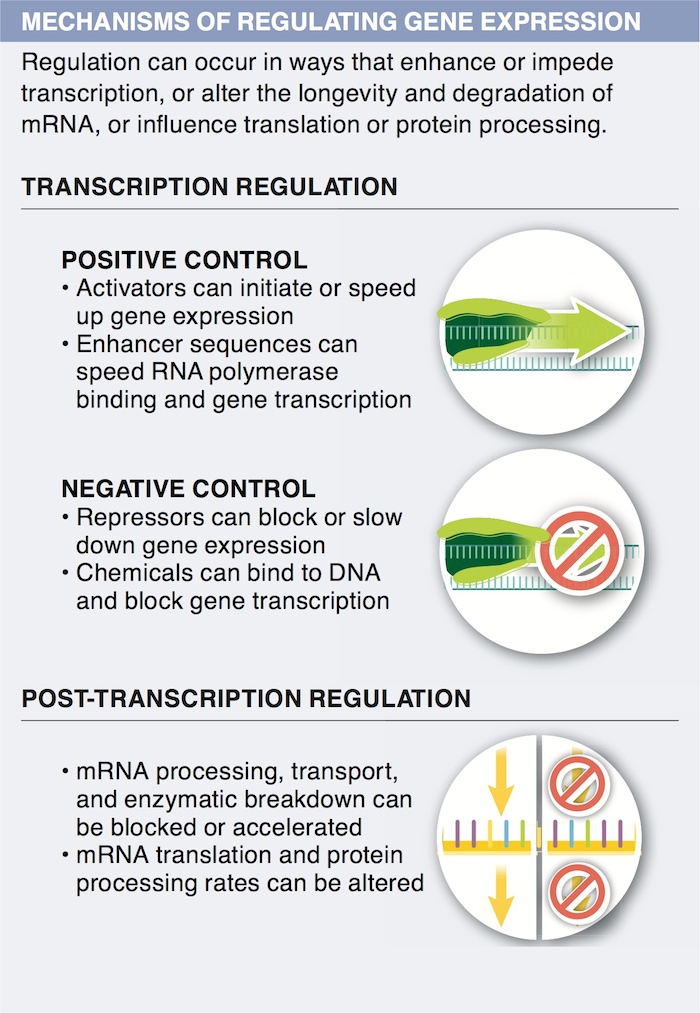
When E.coli inhabits an environment with lactose but without glucose, lactose binds to the repressor protein that is produced by the regulatory gene, located outside the lac operon. This binding causes a change in the shape of the repressor and prevents it from binding to the operator. This allows RNA polymerase to bind to the promoter and begin transcription, producing the mRNA that codes for the enzymes needed for lactose metabolism.
Question 5.9

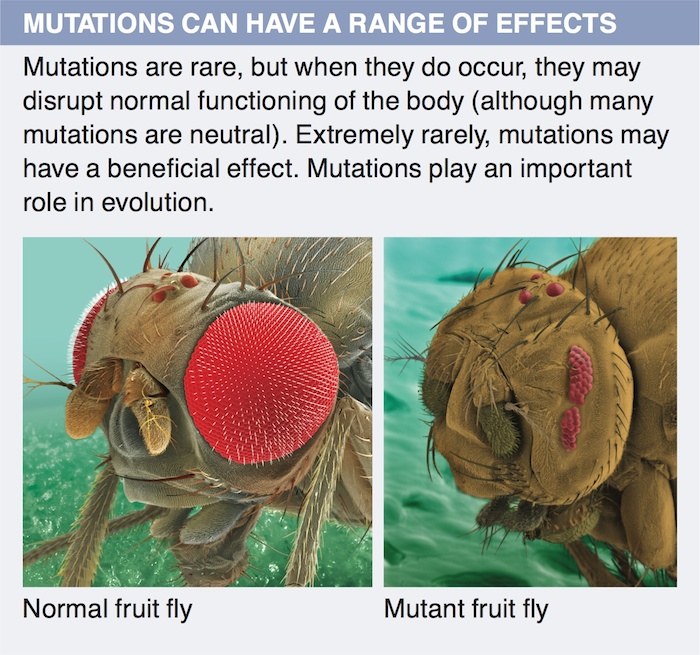
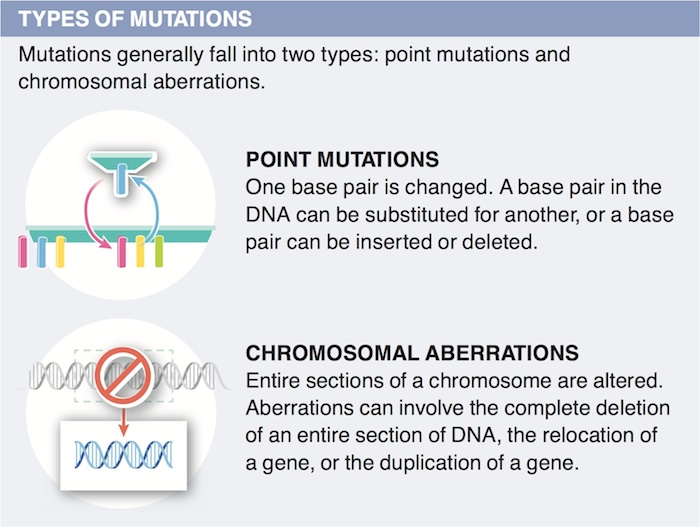
Mutations allow evolution to occur. With new alleles added to the genome, new traits may provide reproductive advantages not present in the past.
Question 5.10
TN+qrobxXcwBLEIzfaaRq+PPpnIJPTGdk058F9EoD8sTrbLDxMv7RCrSf6nIIUWE56HMYf4kT3UIMbjVC//FnM+ZJMcTAcpKBwWn4cr381PbUOk7C0Em/z6/+g9GdIDxThis inherited disease is caused by a genetic mutation that affects an enzyme involved in lipid digestion in lysosomes. As a result, undigested lipid accumulates in lysosomes, and the lysosomes swell until they fill up the cell, resulting in death of the cell. Eventually, a Tay-Sachs sufferer will die from this disorder.
Question 5.11

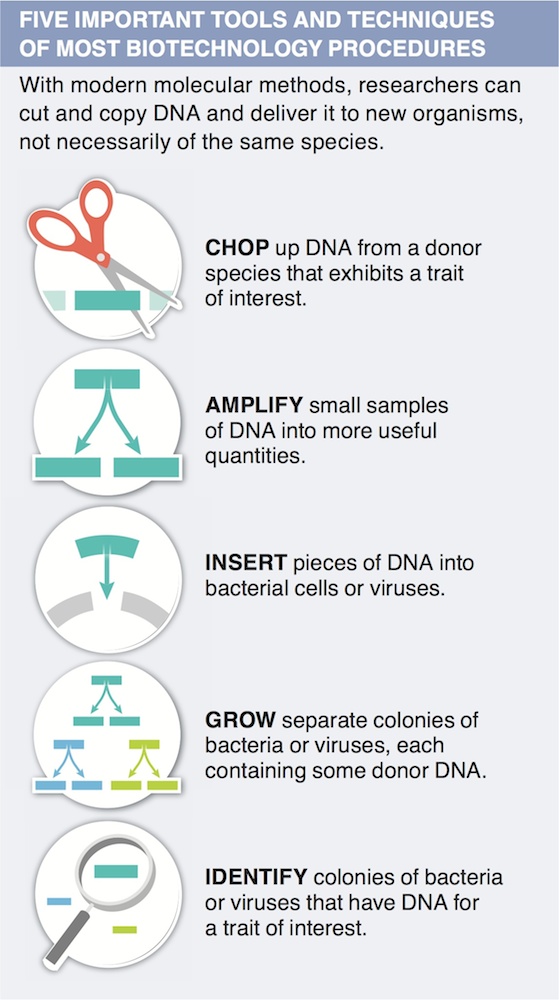

(a) Several types of crops have been genetically engineered with insecticide genes inserted into their genomes, which has reduced the need for application of pesticides. This has reduced costs for farmers and reduced crop loss. (b) Some plants have been genetically engineered by insertion of a gene that provides resistance to herbicides. Farmers can now apply herbicides to fields of these crop plants; the crop is unharmed and the weeds are killed. The need for tilling is reduced and crop yield is increased.
Question 5.12

As farmers use more genetically modified crops, there is much less genetic diversity. The loss of genetic diversity makes crops more susceptible to environmental changes, such as drought, insects, and fungal infections. Plant populations no longer have the genetic potential—that is, the variety of alleles—for imparting resistance to these stressors.
Question 5.13


Improvements in agriculture: Plants and animals can be genetically altered to improve yield, to resist environmental pressures, such as drought and insects, and to provide additional nutrients. The net result is the potential to provide more food and improve nutritional health for more people. Treatment of diseases and production of medicines: Many of today’s medicines have resulted from biotechnology, improving or saving many lives. For example, the gene for insulin is inserted into the DNA of bacteria, which then produce insulin for use by people with diabetes. Although holding much promise, gene therapy has not yet produced the benefits hoped for. Cloning: Agriculture has used cloning in animals to ensure that desired traits are maintained from one generation to the next. Cloning of tissues and organs provides the potential for treating many human ailments. When used responsibly, cloning helps improve human health and nutrition.
Question 5.14

Since many genetic diseases are recessive diseases, potential parents not showing symptoms of the disease might be carriers of the gene. DNA testing can show whether they are carriers. If both potential parents are carriers, they can seek genetic counseling and medical alternatives.
Question 5.15
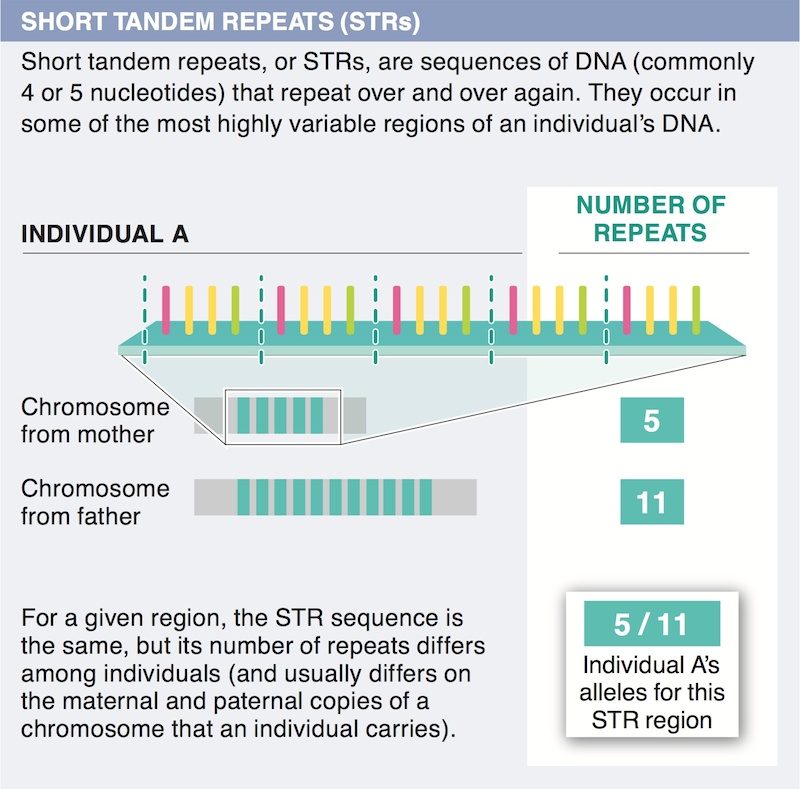
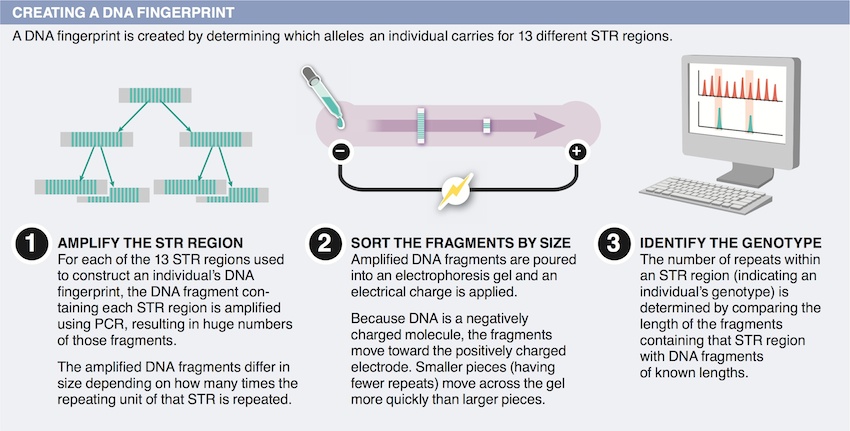
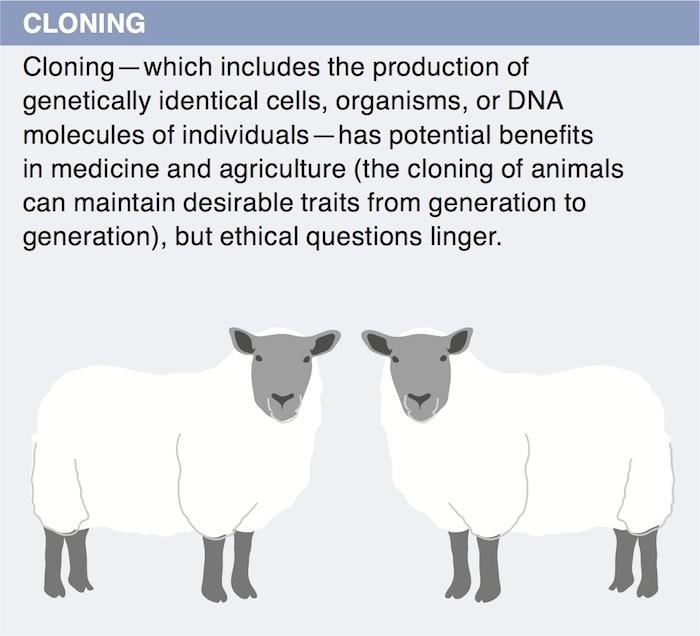
Producing animals with the traits that farmers desire takes a long time, and conventional breeding techniques may not maintain the desired traits in successive generations. Cloning of animals ensures that the desired traits are maintained, and therefore is an appealing alternative.
Activity results are being submitted...